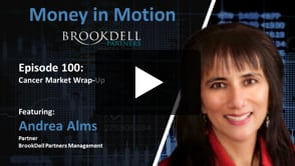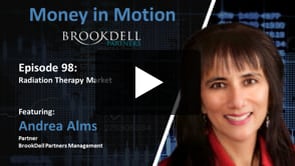Hedge Fund Dashboard:
Top Hedge Fund News, Member Posts, Hedge Fund Daily Indices and more!
Stockholm (HedgeNordic) – Thematic investing has been a growing – and rewarding – trend among investors in recent years, allowing them to capitalize on structural changes that are reshaping business models, industries and economies. The rush to thematics, facilitated by the spread of exotic exchange-traded funds, has also supplied inefficiencies in many industries such as the complex, multifaceted and wide-ranging energy sector.
Oslo-based long/short equity fund AAM Absolute Return under the umbrella of Oslo Asset Management relies on a bottom-up approach to seek and capitalize on such absolute and relative-value inefficiencies. “Many investors in the energy industry trend to have a top-down approach, which creates a lot of relative-value opportunities and inefficiencies to exploit using a bottom-up approach,” CEO Harald James Otterhaug (pictured) tells HedgeNordic. Otterhaug has long turned into a “long-term value-oriented investor with a focus on in-depth fundamental research to seek, identify and capitalize on relative-value inefficiencies.”
“We are a long-term value-oriented investor with a focus on in-depth fundamental research to seek, identify and capitalize on relative-value inefficiencies [in the energy sector].”
“We are quite good at finding inefficiencies, but it is harder to explain why they exist,” acknowledges Otterhaug. “It is almost impossible for me to rationalize why they exist,” he continues. “After all, we are stock pickers rather than macro experts.” As a pure stock picker, Otterhaug finds valuation as the central piece of the decision-making process. “There is one thing that matters, and that is the valuation,” emphasizes Otterhaug. By considering a wide range of fundamental factors when building valuation models, “we predominantly assess how the market prices a given stock relative to our assessments of its intrinsic value.”
“There is one thing that matters, and that is the valuation.”
Bottom-Up, Valuation-Driven Selection Process
“We do not subscribe to any thematic type of investing that involves buying companies with certain characteristics,” points out Otterhaug. “Even a well-managed company with great growth prospects with a good return on its investments could be expensively valued if that’s already reflected in its share price,” he argues. The team running AAM Absolute Return continuously performs valuation analysis to determine what individual stocks are worth, with the stock selection process entirely relying on a bottom-up and value-driven approach.
“We do not subscribe to any thematic type of investing that involves buying companies with certain characteristics.”
Even so, certain market themes or structural changes in the energy industry can create distinct sets of opportunities that are reflected in the fund’s portfolio. “There might be a market theme that creates multiple opportunities,” says Otterhaug. “We may have multiple stocks that are expensive for a common cause, but it is not necessarily the cause that has been driving our stock selection,” he continues. “It is our valuation work that determines the stock selection.”
“We may have multiple stocks that are expensive for a common cause, but it is not necessarily the cause that has been driving our stock selection.”
Similarly, the selection process for short positions is predominantly valuation-driven as well. However, “we don’t necessarily short a stock purely on valuation,” emphasizes Otterhaug. “Managing a short position is different from managing a long position,” he continues. “We need to contain the risk in a somewhat different manner.” According to Otterhaug, “many of our short positions are there to generate returns but also to balance out some fundamental exposure in the portfolio.”
Limited Exposure to Market or Commodity Risk
AAM Absolute Return aims to maintain limited exposure to market risk and commodity prices, with its net market exposure never exceeding 20 percent since launching in late 2005 and predominantly hovering in the range of -20 percent to -40 percent. “Our objective has been to limit market exposure,” says Otterhaug. “Our net exposure has pretty much done that.” The net market exposure at a given point in time “is opportunity-driven, based on the risk-reward of the individual investments.”
“Our objective has been to limit market exposure. Our net exposure has pretty much done that.”
The opportunity set, meanwhile, reflects market inefficiencies across energy-related stocks globally. “There are different types of relative-value inefficiencies we seek to exploit,” points out Otterhaug. “There can be inefficiencies in the way stocks are valued in one sub-industry relative to another, or there could be inefficiencies within a sub-industry,” he continues. “There could also be inefficiencies within the capital structure of a single company. All these opportunities have different risk characteristics.”
Inefficient for Far Too Long
Whereas market inefficiencies and the associated opportunities “make our living,” occasionally inefficiencies are sustained for too long, according to Otterhaug. As famous economist John Maynard Keynes once said, “the markets can remain irrational longer than you can remain solvent.” Whereas AAM Absolute Return is still up and running, a set of inefficiencies Otterhaug and his team sought to exploit remained inefficient far too long, causing a large drawdown and a group of investors leaving in 2019.
“Going into the 2017-2019 period, we started seeing some very significant inefficiencies and opportunities.”
“Going into the 2017-2019 period, we started seeing some very significant inefficiencies and opportunities,” says Otterhaug, with the oil and gas sector offering an attractive risk-reward for the long book and the energy infrastructure sector becoming a lucrative pool for short positions. However, “this opportunity set had one major risk, it had a significant basis risk between the longs and the shorts even if they are fundamentally related,” according to Otterhaug. “Our exposure at the time was long one industry and short another industry rather than exposures within segments.”
“This was an opportunity set with high potential, but also with somewhat higher near-term volatility risk,” continues Otterhaug. In case of a downfall in energy markets, the basis risk implied that the long portfolio would react quicker and sooner than the short book, according to Otterhaug. “Seeking to offset that risk, we were managing the portfolio with 40 percent net short exposure over that period,” he adds. “When energy stocks started collapsing as we expected, our longs started falling quite quickly, but unfortunately for us, the stocks in our short book almost did not react at all.”
“When energy stocks started collapsing as we expected, our longs started falling quite quickly, but unfortunately for us, the stocks in our short book almost did not react at all.”
The short bet on the “energy infrastructure sector has been a long theme for us,” according to Otterhaug. “Many of these companies pay unsustainable dividends, are massively overvalued, and have much more commodity price exposure than generally thought,” he adds. “In mid-2018, our short book of NOK 3.5 billion did not earn us anything in protection or returns during the first almost 12 months of the sell-off, which was quite frustrating,” says Otterhaug. “It created a significant drawdown.”
AAM Absolute Return ended 2019 down by 21 percent after incurring a loss of eight percent in 2018, which was the fund’s only second down year since inception. “It is not a risk that was completely a surprise,” acknowledges Otterhaug, “but the extent of the mismatch took us by surprise.” Otterhaug goes on to point out that “our shorts did not initially react, but it took 12 months before they paid off the following year.”
“Our shorts did not initially react, but it took 12 months before they paid off the following year. 2020 is really a reversal.”
“2020 is really a reversal,” says Otterhaug. AAM Absolute Return returned about 51 percent in 2020, gradually but steadily recovering from its 50 percent drawdown that started in July of 2018. The ongoing turnaround is a repeat of AAM Absolute Return’s journey in the 2014-2015 period, when a decline of about ten percent in 2014 was followed by an advance of 58.5 percent in the following year. “Every drawdown we have experienced in the past has always been followed by a quick and significant reversal,” emphasizes Otterhaug.
“Every drawdown we have experienced in the past has always been followed by a quick and significant reversal.”
AAM Absolute Return has delivered an annualized return of 9.6 percent since launching in December of 2005. More importantly, the fund’s returns exhibit almost zero correlation to broader equity markets (-0.02 with MSCI World Equities and 0.00 with the S&P 500) and close to zero correlation to the price of crude oil (0.05).
“We are in a market with extreme inefficiencies and opportunities. Our energy expertise enables us to find opportunities with some kind of convexity, option-like exposure.”
Looking ahead, Otterhaug continues to see “exceptional opportunities, with the risk related to those opportunities becoming more attractive than in previous years.” According to Otterhaug, “we are in a market with extreme inefficiencies and opportunities. Our energy expertise enables us to find opportunities with some kind of convexity, option-like exposure.” Otterhaug and his team even find extreme inefficiencies in the capital structure of companies, which is rare. “But we are humbled by the risk, so we are careful about managing risk.”
Pain and Gain from Irrationality on HedgeNordic.
Today's Hedge Fund Headlines:
Access Over 250K+ Industry Headlines, Posts and Updates
Join AlphaMaven
The Premier Alternative Investment
Research and Due Diligence Platform for Investors
Free Membership for Qualified Investors and Industry Participants
- Easily Customize Content to Match Your Investment Preferences
- Breaking News 24/7/365
- Daily Newsletter & Indices
- Alternative Investment Listings & LeaderBoards
- Industry Research, Due Diligence, Videos, Webinars, Events, Press Releases, Market Commentary, Newsletters, Fact Sheets, Presentations, Investment Mandates, Video PitchBooks & More!
- Company Directory
- Contact Directory
- Member Posts & Publications
- Alpha University Video Series to Expand Investor Knowledge
- AUM Accelerator Program (designed for investment managers)
- Over 450K+ Industry Headlines, Posts and Updates






